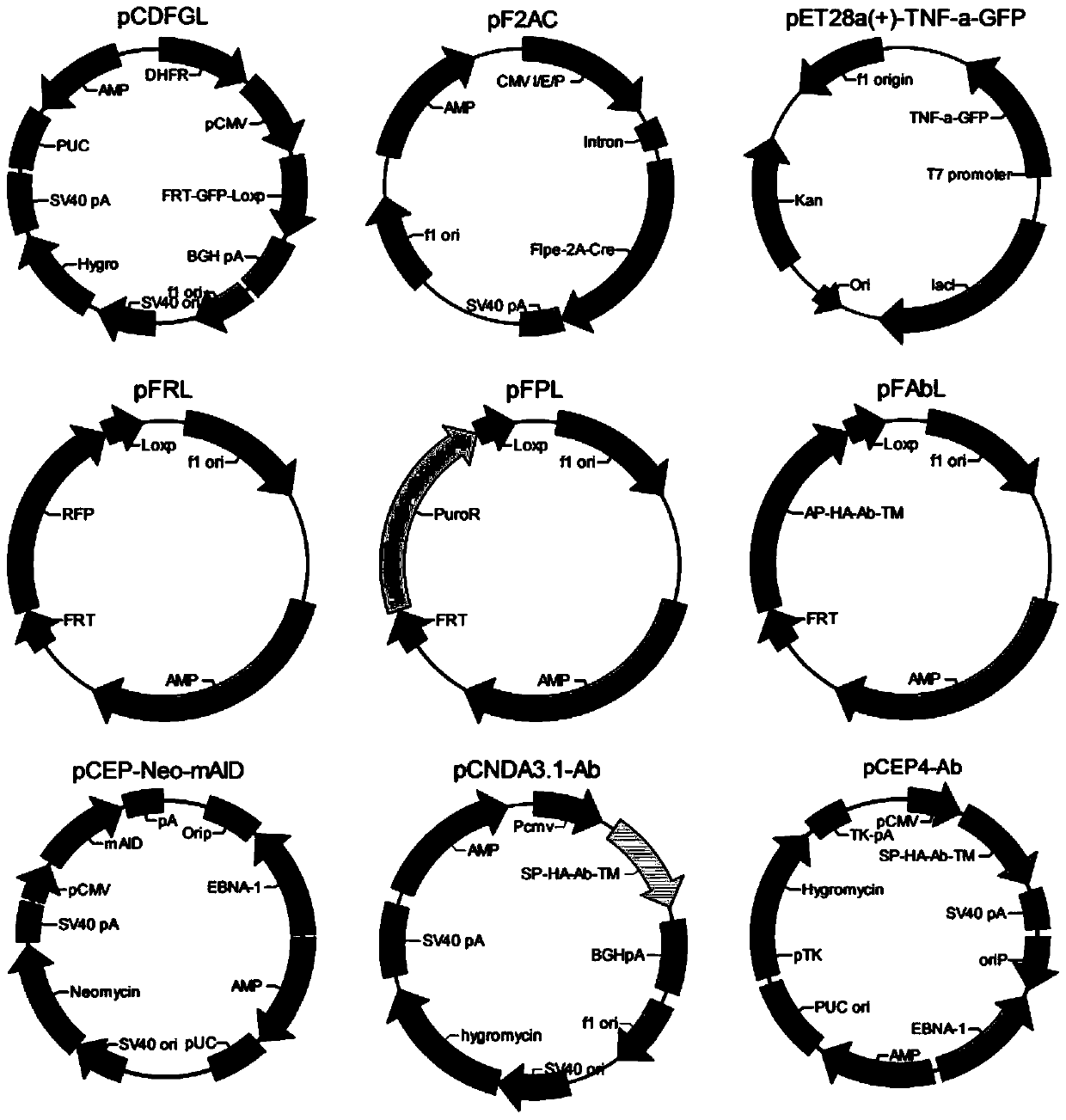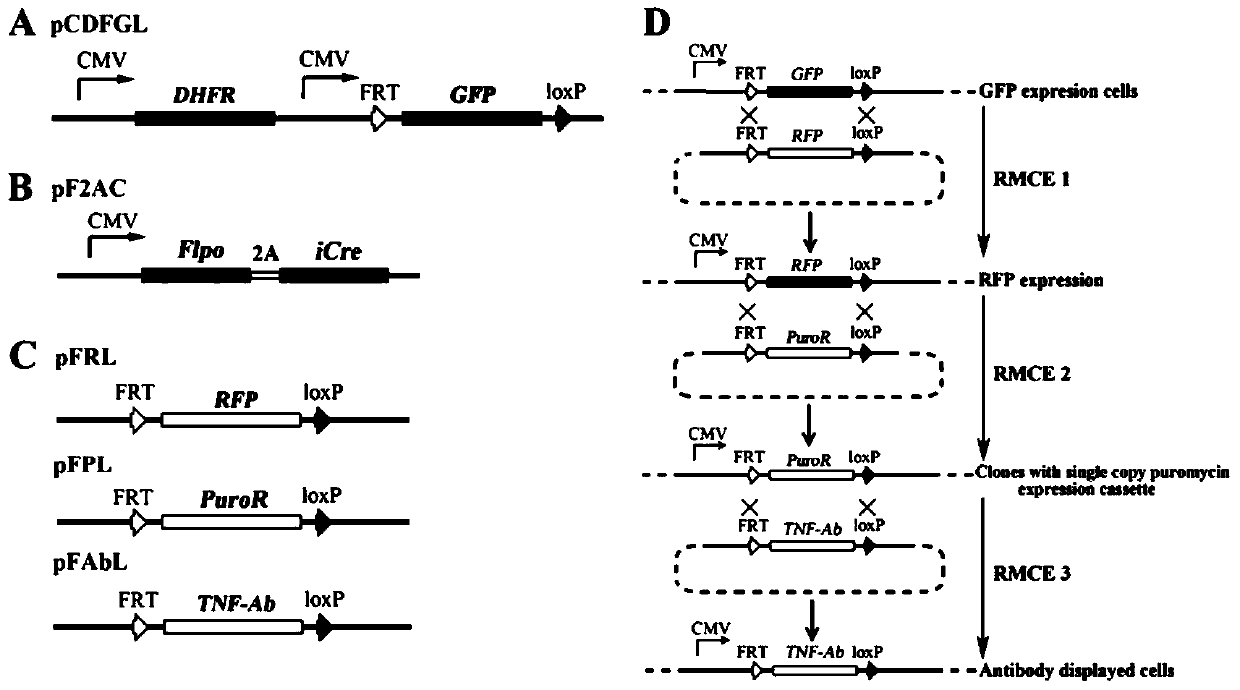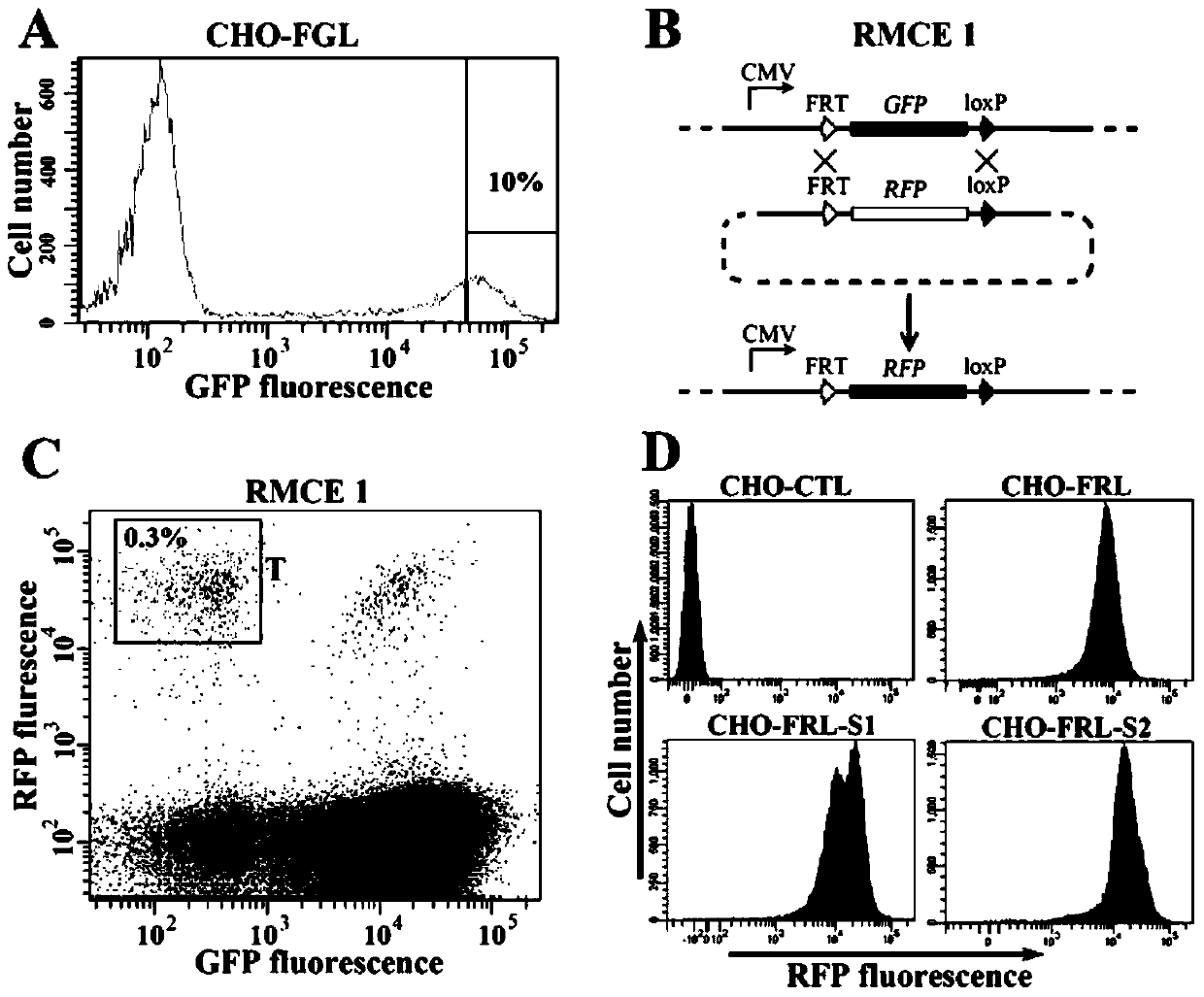Cell line for antibody affinity maturation screening and method of use thereof
An affinity, antibody technology, applied to cells modified by introducing foreign genetic material, using a vector to introduce foreign genetic material, recombinant DNA technology, etc. And other issues
- Summary
- Abstract
- Description
- Claims
- Application Information
AI Technical Summary
Problems solved by technology
Method used
Image
Examples
Embodiment 1
[0026] Embodiment 1, the construction of plasmid
[0027] In order to establish an efficient antibody affinity maturation system based on CHO / dhFr-cells, the following plasmids were constructed (Table 1, figure 1 ):
[0028] (1) Use the CDNA of CHO-K1 cells as a template to PCR out the CHO dihydrofolate reductase (DHFR) gene, and then connect the SV40 promoter (promoter) and SV40 polyA (polyA) sequences to DHFR by overlapping PCR , form SV40promoter-DHFR-SV40polyA sequence (this sequence can transcribe and express DHFR in mammalian cells), insert SV40promoter-DHFR-SV40polyA sequence into pCDNA3.1 / hygro(+) plasmid, construct pCDNA3.1 / hygro(+) - DHFR plasmid (abbreviated as pCD).
[0029] (2) The FRT-EGFP-loxP sequence was obtained by PCR using EGFP as a template, and connected to the pCD plasmid to construct the pCDNA3.1 / hygro(+)-FRT-GFP-loxP-DHFR plasmid (pCDFGL for short).
[0030] (3) Flpo-2A-iCre sequence was amplified by overlap PCR using Flpo and iCre as templates, and...
Embodiment 2
[0038]Example 2. Using the recombinase-mediated cassette replacement (RMCE) method to establish stable, high-efficiency expression and replaceable CHO cells of the gene of interest
[0039] 1. Design ideas
[0040] In order to establish CHO cells that stably and efficiently express the target gene and can perform recombinase-mediated cassette replacement (RMCE) for antibody affinity maturation, the Flp and Cre dual histone-mediated cassette replacement (dual RMCE) method was selected. Create cell lines. A series of plasmids for RMCE were established, and the structure of its functional region is as follows figure 2 shown.
[0041] figure 2 (A) shows that in the pCDFGL plasmid, the GFP gene containing FRT and loxP recombinase binding sites is inserted downstream of the CMV promoter, and the DHFR gene containing the SV40 promoter is inserted into the plasmid, so that the pCDFGL plasmid can express both GFP and DHFR .
[0042] figure 2 (B) shows that in the pF2AC plasmid...
Embodiment 3
[0066] Example 3. Affinity maturation of anti-TNF-α single-chain antibody (3f8-scFv)
[0067] Using anti-TNF-α single-chain antibody (3f8-scFv) as an example to verify the affinity maturation method of PuroR-14 cells
[0068] The basic procedure for antibody affinity maturation is: combine approximately 2x10 6 Cells displaying the antibody were transfected with the pCEP-Neo-mAID plasmid, then placed in a medium containing G148 antibiotics and cultured for 7 days (the cells proliferated to about 200 million), trypsinized to collect about 100 million cells, and used anti-HA tagged After the antibody (anti-HA-PE 1:300 dilution, BD) and TNF-α-GFP fusion protein co-labeled the cells at 4°C, the cells with the highest affinity (accounting for about 0.02-0.05% of the total cells) were sorted by flow cytometry. %), the sorted cells were cultured in a medium without G418 antibiotics for 3 days, the cells were expanded to about 200,000, and the pCEP-Neo-mAID plasmid was re-transfected ...
PUM
 Login to View More
Login to View More Abstract
Description
Claims
Application Information
 Login to View More
Login to View More - R&D
- Intellectual Property
- Life Sciences
- Materials
- Tech Scout
- Unparalleled Data Quality
- Higher Quality Content
- 60% Fewer Hallucinations
Browse by: Latest US Patents, China's latest patents, Technical Efficacy Thesaurus, Application Domain, Technology Topic, Popular Technical Reports.
© 2025 PatSnap. All rights reserved.Legal|Privacy policy|Modern Slavery Act Transparency Statement|Sitemap|About US| Contact US: help@patsnap.com



